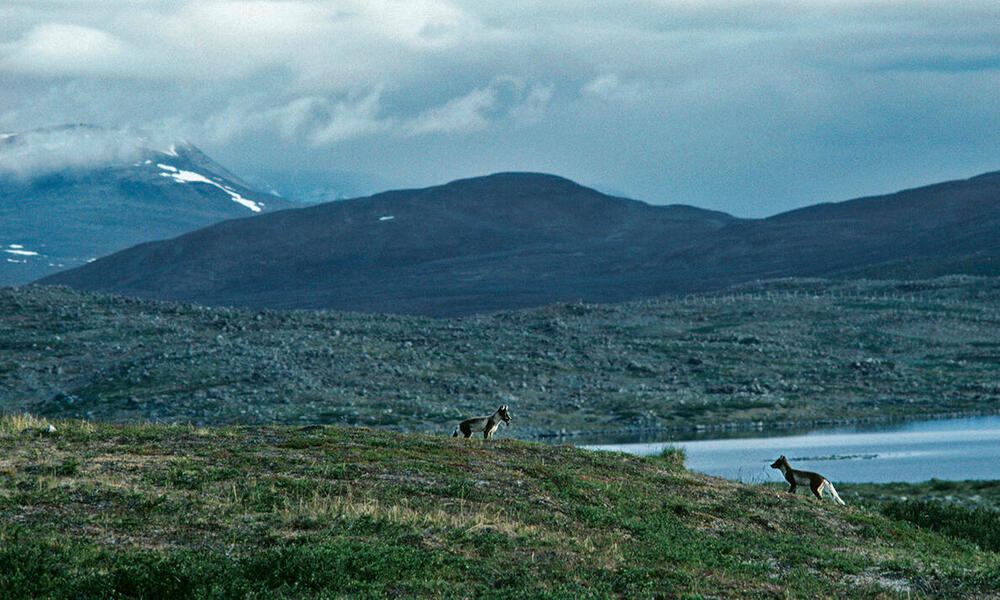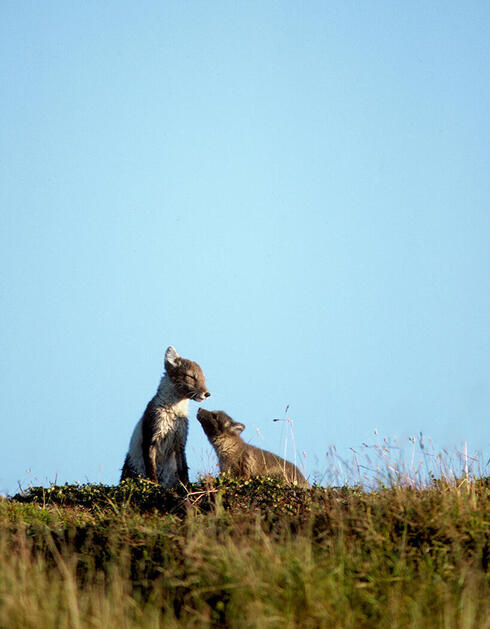”The results of long-term conservation work over the past 20 years are now becoming visible," said Specialist Tuomo Ollila from National Parks Finland, which is the authority responsible for the Arctic fox conservation in Finland. "This is not the finish line, but good progress."
The Arctic fox is a critically endangered species in Finland. At the beginning of the 2000s, the entire Nordic Arctic fox population hit an all-time low, with approximately 100 adult individuals. Currently, an estimated 450 adult Arctic foxes live in Norway, Sweden, and Finland. Finland sees an estimated 10 to 20 Arctic foxes annually, and the number of observations has been increasing in recent years.
"It is unique to see the return of a species that has disappeared from Finland’s breeding species for decades," said Petteri Tolvanen, WWF program manager. "What is even more surprising, is that it returns at a time like this when climate change is progressing in the northern regions even faster than anticipated. Global warming and its consequences are the greatest threat to the Arctic fox, in the long term."
We must ensure continuity of Arctic fox conservation
Tolvanen estimates that two factors have had a significant impact on the success of breeding and the growth of the Arctic fox population in the Nordic region. A natural reason is the return of cyclic fluctuations in small rodent populations in mountainous areas.
"In the past, fairly regular vole population cycles disappeared from our mountainous areas, for an unknown reason after the mid-1980s, but returned, at least for the time being, since 2007. Lemmings and voles are key species in the fell area and also the main source of food for the Arctic fox,” said Tolvanen.
Another reason is the joint Nordic Arctic fox monitoring and conservation work, which has lasted for decades. In Finland, Metsähallitus, National Parks Finland is responsible for the conservation and monitoring of the Arctic fox. In 2020, WWF Finland re-established the Arctic fox working group to support this work.
The most important conservation tools for the Arctic fox are supplemental feeding and fox hunting in mountainous areas. National Parks Finland and WWF have taken nearly 30 feeding dispensers filled with dog food to the areas where the Arctic fox is found and in the vicinity of old breeding sites. The dispensers are built in such a way that the red fox cannot use them. Supplemental feeding’s main purpose is to support the survival of pups from the first winter, as well as to help adult Arctic foxes stay in the best territories during weak vole years. In addition, National Parks Finland is removing red foxes spreading upwards in the area, as they are larger in size than Arctic foxes. They also fight for the same food and use the same breeding sites as their Arctic cousin.

